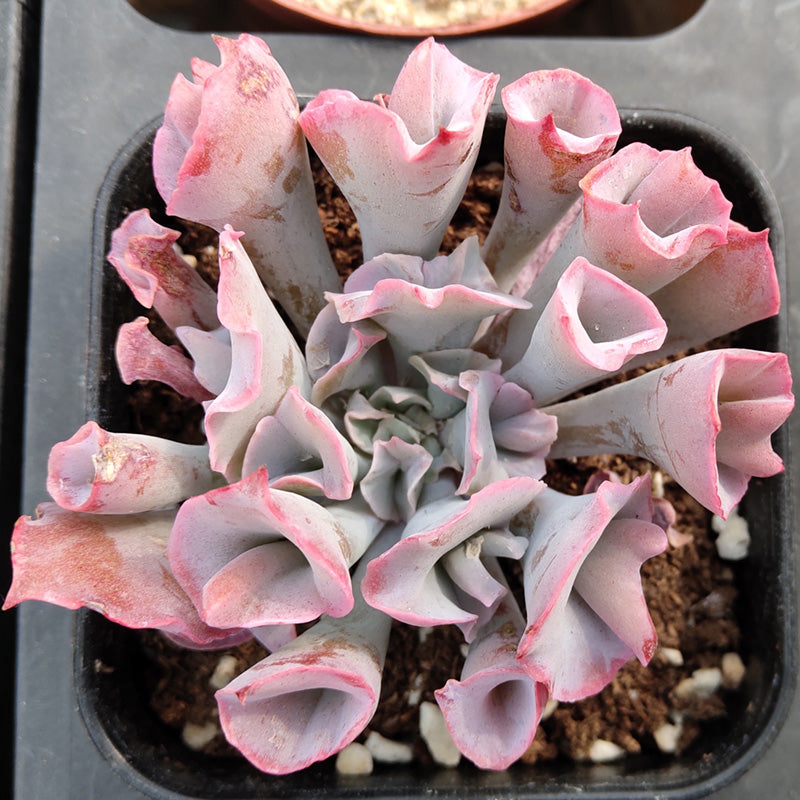Echeveria Trumpet Pinky is a succulent plant belonging to the Crassulaceae family, a small to medium-sized variety, and a horticultural cultivar that can grow to over 15 centimeters.
Characteristics: The plant grows in a lotus-like rosette, with ovate or cylindrical leaves, slightly thin, and sharply pointed at the leaf tips. The leaves closer to the center of the plant are cylindrical, somewhat resembling pig noses, with irregular shapes. The leaves are powder-blue or pink, with thin edges that turn red easily. In optimal conditions, the plant forms a compact rosette, and the leaves can turn completely pink.
Habitat: Prefers warm, dry, and well-lit environments, with strong drought resistance. It thrives in loose, well-draining soil and does not have a distinct dormant period. Keep it warm above 5°C and provide shade when temperatures exceed 30°C.
Mature Size: Small to medium-sized species.
Status: Appearance may vary depending on season, light exposure, and temperature fluctuations.
Sunlight: It can be exposed to sunlight during spring and autumn for better coloration. It can be grown outdoors as long as the leaves are plump.
Soil: A mix of peat and perlite can be used initially, with a higher proportion of granules in later stages.
Temperature: Suitable temperature range is between 10°C to 30°C.
Propagation: Leaf cuttings or division.
Suitable Planting Locations: Balconies, windowsills, and terraces.
Echeveria Trumpet Pinky is a relatively easy-to-care-for succulent variety. Initially, it can be planted in succulent soil (peat + perlite) for 2-3 months. After the roots have developed, repotting can be done, increasing the proportion of granules. As long as it is not exposed to prolonged rain or kept in excessively damp soil, maintenance is generally hassle-free. Avoid prolonged placement in areas without sunlight.
During summer, use pots slightly larger than the plant (2-3 cm diameter), with a layer of nutrient-rich soil about 2-3 cm high, and fill the rest with granules to reduce the risk of water accumulation in the soil after watering. Provide a small amount of sunlight daily. The plant does not have a distinct dormant period, but avoid excessive heat to prevent symptoms of high-temperature and high-humidity stress, which could lead to root rot.
The leaves of the Echeveria Trumpet Pinky are irregularly shaped, with thin edges that curl inward to form cylindrical tubes, somewhat resembling the leaves of Crassula perforata, but less regular in shape. They are arranged in a relatively scattered lotus-like rosette. The surface of the leaves is covered with thick white powder, and most of the time, the leaves are pinkish-white or grayish-blue. With sufficient sunlight and large temperature fluctuations between day and night, they can exhibit a completely pink coloration, with translucent bright pink edges. Due to the pink cylindrical shape resembling pig nostrils, it is sometimes humorously referred to as "pig nose" by enthusiasts. Apart from resembling pig noses, the irregular leaves also bear some resemblance to flutes and slender fingers, hence the names "Echeveria Trumpet Pinky" and "Cylindrical Leaf Fingers."
